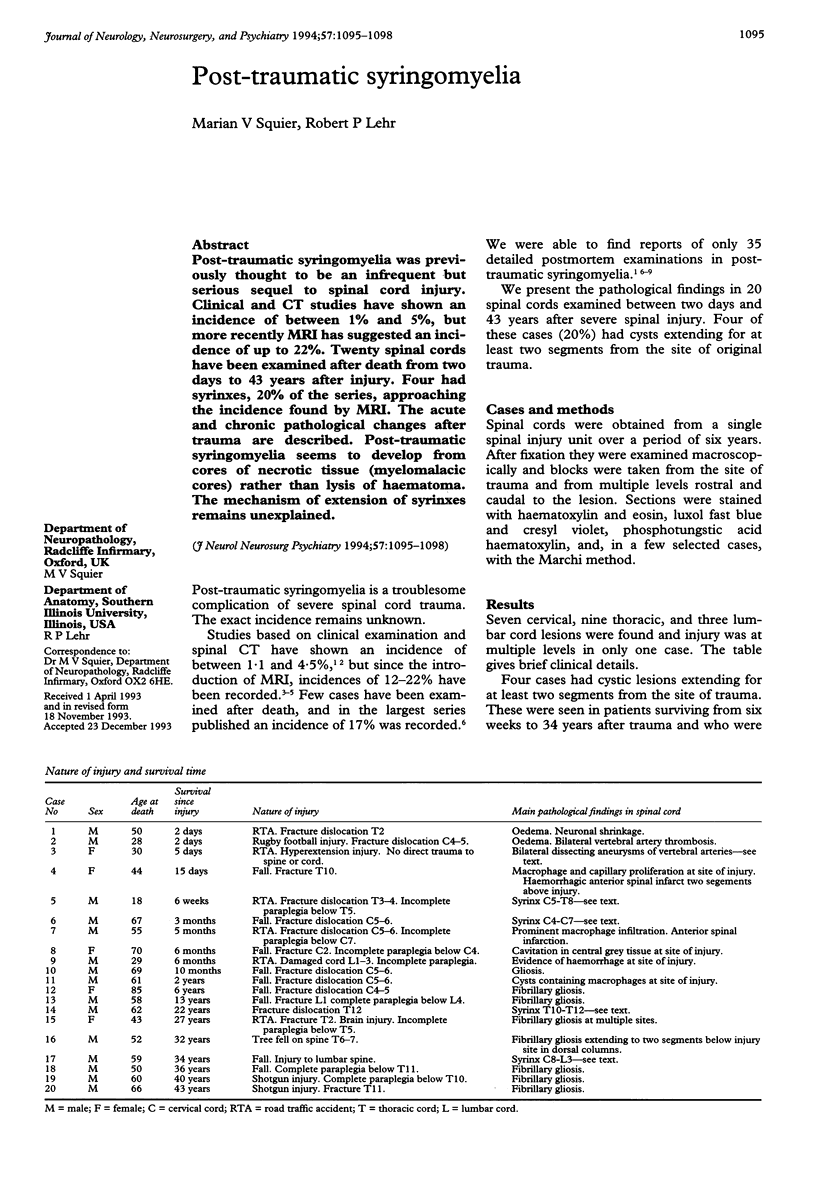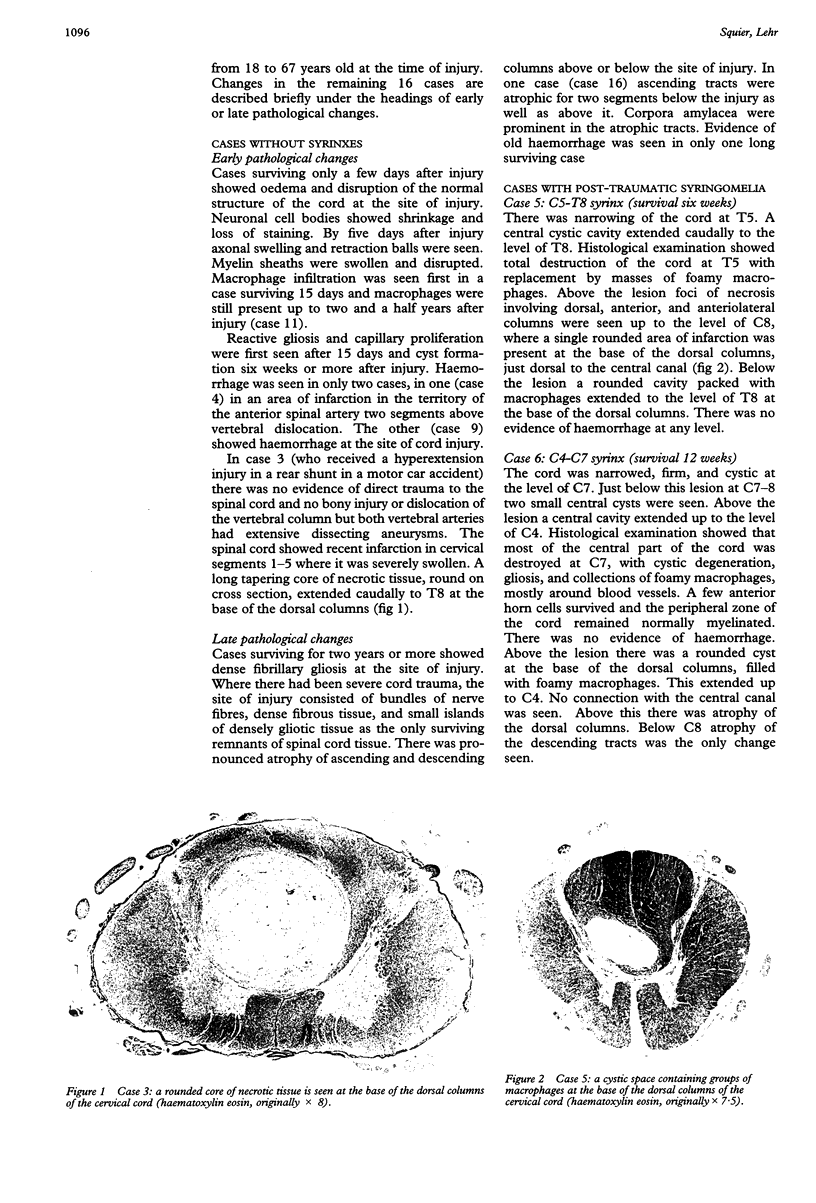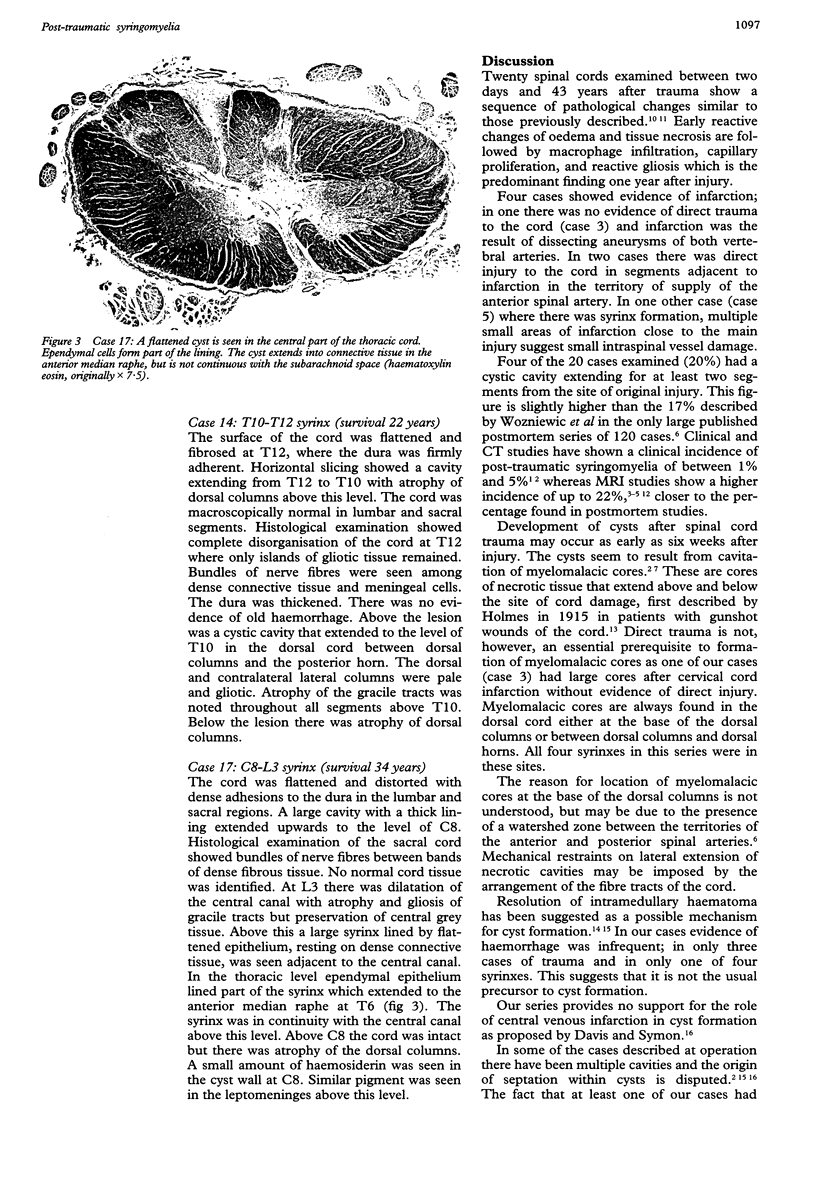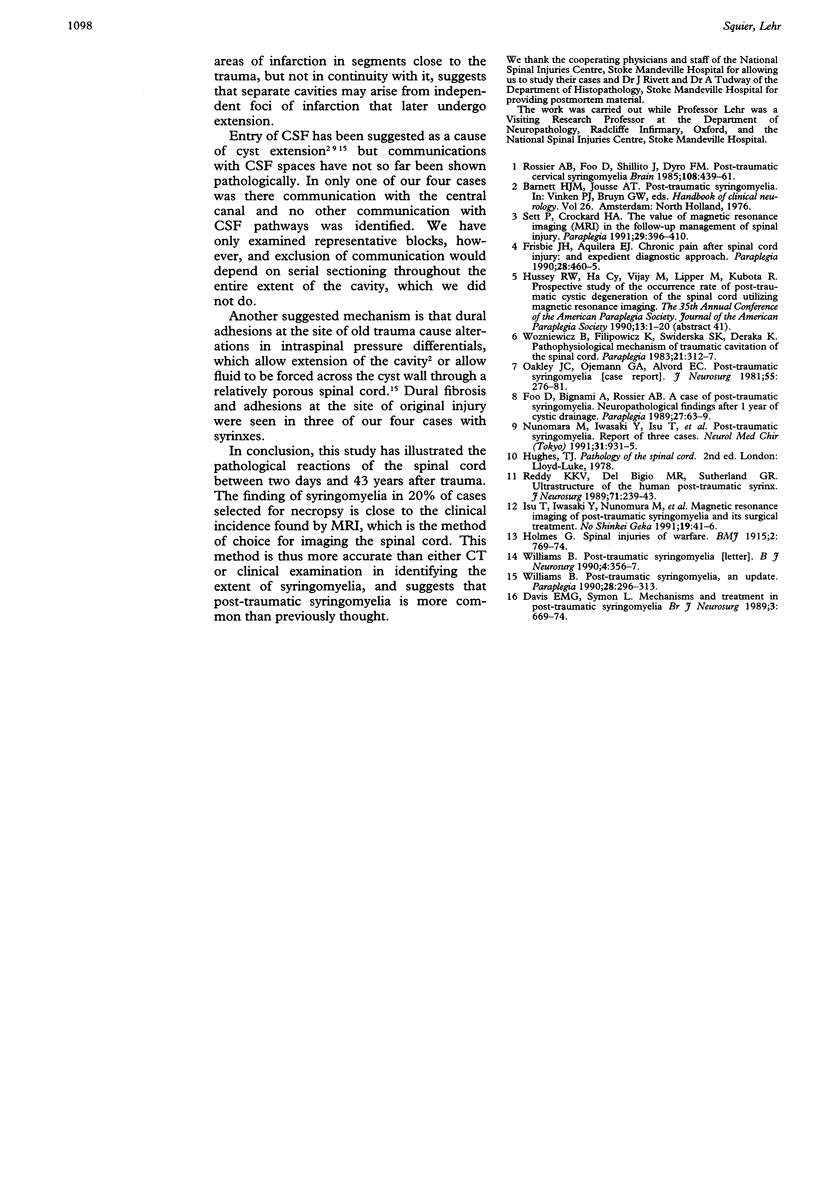Abstract
Post-traumatic syringomyelia was previously thought to be an infrequent but serious sequel to spinal cord injury. Clinical and CT studies have shown an incidence of between 1% and 5%, but more recently MRI has suggested an incidence of up to 22%. Twenty spinal cords have been examined after death from two days to 43 years after injury. Four had syrinxes, 20% of the series, approaching the incidence found by MRI. The acute and chronic pathological changes after trauma are described. Post-traumatic syringomyelia seems to develop from cores of necrotic tissue (myelomalacic cores) rather than lysis of haematoma. The mechanism of extension of syrinxes remains unexplained.
Full text
PDF



Images in this article
Selected References
These references are in PubMed. This may not be the complete list of references from this article.
- Davis C. H., Symon L. Mechanisms and treatment in post-traumatic syringomyelia. Br J Neurosurg. 1989;3(6):669–674. doi: 10.3109/02688698908992690. [DOI] [PubMed] [Google Scholar]
- Foo D., Bignami A., Rossier A. B. A case of post-traumatic syringomyelia. Neuropathological findings after 1 year of cystic drainage. Paraplegia. 1989 Feb;27(1):63–69. doi: 10.1038/sc.1989.10. [DOI] [PubMed] [Google Scholar]
- Frisbie J. H., Aguilera E. J. Chronic pain after spinal cord injury: an expedient diagnostic approach. Paraplegia. 1990 Sep;28(7):460–465. doi: 10.1038/sc.1990.62. [DOI] [PubMed] [Google Scholar]
- Nunomura M., Iwasaki Y., Isu T., Akino M., Abe H., Miyasaka K., Nomura M., Saitou H., Nakamura N. [Post-traumatic syringomyelia. Report of three cases]. Neurol Med Chir (Tokyo) 1991 Dec;31(13):931–935. doi: 10.2176/nmc.31.931. [DOI] [PubMed] [Google Scholar]
- Oakley J. C., Ojemann G. A., Alvord E. C., Jr Posttraumatic syringomyelia. Case report. J Neurosurg. 1981 Aug;55(2):276–281. doi: 10.3171/jns.1981.55.2.0276. [DOI] [PubMed] [Google Scholar]
- Reddy K. K., Del Bigio M. R., Sutherland G. R. Ultrastructure of the human posttraumatic syrinx. J Neurosurg. 1989 Aug;71(2):239–243. doi: 10.3171/jns.1989.71.2.0239. [DOI] [PubMed] [Google Scholar]
- Rossier A. B., Foo D., Shillito J., Dyro F. M. Posttraumatic cervical syringomyelia. Incidence, clinical presentation, electrophysiological studies, syrinx protein and results of conservative and operative treatment. Brain. 1985 Jun;108(Pt 2):439–461. doi: 10.1093/brain/108.2.439. [DOI] [PubMed] [Google Scholar]
- Sett P., Crockard H. A. The value of magnetic resonance imaging (MRI) in the follow-up management of spinal injury. Paraplegia. 1991 Jul;29(6):396–410. doi: 10.1038/sc.1991.55. [DOI] [PubMed] [Google Scholar]
- Williams B. Post-traumatic syringomyelia, an update. Paraplegia. 1990 Jun;28(5):296–313. doi: 10.1038/sc.1990.39. [DOI] [PubMed] [Google Scholar]
- Williams B. Post-traumatic syringomyelia. Br J Neurosurg. 1990;4(4):356–357. doi: 10.3109/02688699008992750. [DOI] [PubMed] [Google Scholar]
- Wozniewicz B., Filipowicz K., Swiderska S. K., Deraka K. Pathophysiological mechanism of traumatic cavitation of the spinal cord. Paraplegia. 1983 Oct;21(5):312–317. doi: 10.1038/sc.1983.52. [DOI] [PubMed] [Google Scholar]





